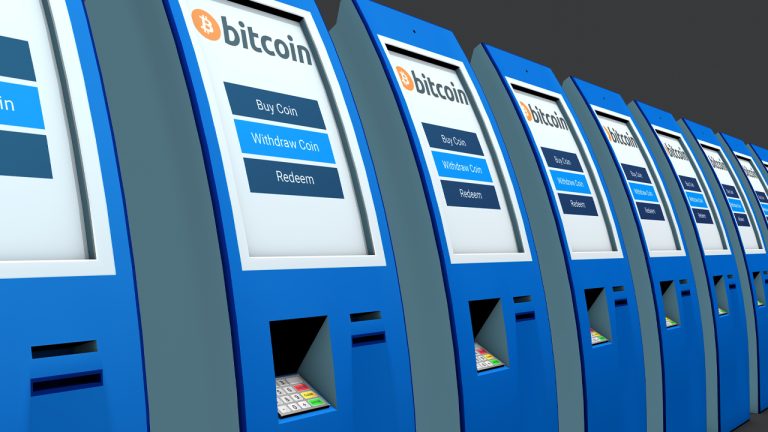
The first and the last major attempt to encourage a comprehensive crypto framework was buried in the House of Commons on Nov. 23.
In October, Toronto-based Coinsquare became the first crypto trading business to get dealer registration from the Investment Industry Regulatory Organization of Canada (IIROC). That means a lot as now Coinsquare investors’ funds enjoy the security of the Canadian Investment Protection Fund in the event of insolvency, while the exchange is required to report its financial standing regularly.
This news reminds us about the peculiarities of Canadian regulation of crypto. While the country still holds a rather tight process of licensing the virtual asset providers, it outpaces the neighboring United States in its experiments with crypto exchange-traded funds (ETFs), pension funds’ investments and central bank digital currency (CBDC) efforts.
An era of restricted dealers
Coinsquare, which happens to be Canada’s longest-operating crypto asset trading platform, benefits from its new legal status as none of its competitors can currently boast the same legal footing. By publishing time, all other local players must have the status of a “restricted dealer,” signaling that they’ve made their registration bid and now await IIROC’s decision.
The Guidance for Crypto-Asset Trading Platforms was introduced by IIROC and the Canadian Securities Administrators (CSA) in 2021. It requires crypto businesses dealing with security tokens or crypto contracts to register as “investment dealers” or “regulated marketplaces.”
All local companies have been given a two-year transitory period, during which they should start the registration process and, in some cases, obtain the “restricted dealer” temporary registration.
The list of “restricted dealers” that have been granted a two-year relief period to operate amid the ongoing registration process is rather short and includes mainly local companies, such as Coinberry, BitBuy, Netcoins, Virgo CX and others. These companies still enjoy a right to facilitate buying, selling and holding of crypto assets, but what lies ahead of them is the stringent compliance procedure necessary to continue their operations after 2023. For example, Coinsquare had to obtain an insurance policy that includes an endorsement of losses of crypto assets and fund a trust account maintained at a Canadian bank.
The prosecutors have been watching closely for any non-compliance. In June 2022, the Ontario Securities Commission (OSC) issued financial penalties against Bybit and KuCoin, claiming violation of securities laws and operating unregistered crypto asset trading platforms. It obtained orders banning KuCoin from participating in the province’s capital markets and fining the exchange for more than $1.6 million.
The land of experiments
At the same time, there are adoption cases in Canada that sound radical to the United States. For example, there are dozens of crypto ETFs to invest in the country, while Grayscale still has to lead the court battle with the U.S. Securities and Exchange Commission (SEC) for a right to launch its first ETF.
The world’s first Bitcoin (BTC) ETF for individual investors was approved by the OSC for Purpose Investments back in 2021. Purpose Bitcoin ETF accumulates around 23,434 BTC, which is actually a prominent symptom of the bear market. In May 2022, it held around 41,620 BTC. The major outflow from the Purpose Bitcoin ETF occurred in June, when about 24,510 BTC, or around 51% of its asset under management, were withdrawn by investors in a single week.
Recent: FTX’s collapse could change crypto industry governance standards for good
Another breakthrough in Canadian crypto adoption erupted when the country’s largest pension funds started to invest in digital assets. In 2021, the Caisse de Depot et Placement du Québec — one of the largest pension funds in the French-speaking province of Quebec — invested $150 million into Celsius Network.
The same month, the Ontario Teachers’ Pension Plan announced its $95-million investment in FTX. Unfortunately, this news didn’t age well as both companies have since collapsed and both pension funds had to write off their investments. Perhaps, in that light, the U.S. Department of Labor’s warning to employers against using pension funds that include Bitcoin or other cryptocurrencies now seems like a prudent precaution.
Due to its cold climate, cheap electric supply and light regulation, Canada is among the world’s leading destinations for crypto mining. In May 2022, it accounted for 6.5% of the global BTC hash rate. However, this fall, the firm managing electricity across the Canadian province of Quebec, Hydro-Québec, requested the government to release the company from its obligation to power crypto miners in the province. As the reasoning goes, electricity demand in Québec is expected to grow to the point that powering crypto will put pressure on the energy supplier.
The development of the CBDC is another direction where Canada has been moving faster than its neighbor to the south. In March 2022, the Bank of Canada launched a 12-month research project focused on the design of the Canadian digital dollar in collaboration with the Massachusetts Institute of Technology.
In October, the Bank of Canada published a research report and proposed several particular archetypes of CBDC as useful for organizing “the possible CBDC designs.” While back in March, there was “no decision made on whether to introduce a CBDC in Canada,” the country’s recent budget amendment contains a small section on “Addressing the Digitalization of Money.” In the statement, the government said consultations with stakeholders on digital currencies, stablecoins and CBDCs are being launched on Nov. 3, although exactly which stakeholders will be engaged remains unclear.
The partisan divide
The discussion of what could have become Canada’s formal legal framework for crypto — bill C-249 — showed a sharp partisan divide around the topic. A bill for the “encouragement of the growth of the cryptoasset sector” was introduced to the House of Commons in February 2022 by a member of the Conservative party and ex-Minister Michelle Garner. The lawmaker proposed having Canada’s Minister of Finance consult with industry experts to develop a regulatory framework aimed at boosting innovation around crypto three years after the bill’s passage.
Despite the voiced support from the local crypto community, the bill didn’t meet much approval among fellow lawmakers. During the second reading on Nov. 21–23, members of other political parties, including the ruling Liberal party, blasted both the proposition and the Conservative party with accusations of promoting the “dark money system,” and Ponzi scheme and bankrupting retirees and as a result, C-249 is now officially buried.
While Michelle Garner introduced the bill, Conservative party leader Pierre Poilievre took most of the heat. A former Minister of Employment and Social Development, Poilievre has been advocating for more financial freedom through tokens, smart contracts and decentralized finance. Earlier this year, he urged the Canadian public to vote for him as their leader to “make Canada the blockchain capital of the world.”
The next general elections in Canada are scheduled for 2025, and given C-249’s failure and the general condition of the market, it’s not likely that Poilievre and the Conservatives will get broad support in the Parliament for their pro-crypto efforts until that time. Currently, the Conservative party holds only 16 out of 105 seats in the Senate and 119 out of 338 in the House of Commons.
What’s next
From a trading platform perspective, there are specific challenges that the industry strives to address, Julia Baranovskaya, chief compliance officer and co-founding team member at Calgary-based NDAX, told Cointelegraph.
The majority of industry stakeholders would like to see “clear guidelines and a risk-based approach.” Currently, a majority of regulatory authorities in Canada have chosen to apply existing financial industry rules and regulations designed and implemented for the traditional financial industry.
However, Baranovskaya highlighted that in recent years, regulators have been engaging in a closer dialogue with the crypto industry. The Securities Commission has created a sandbox and encouraged crypto asset trading platforms and innovative types of businesses offering alternative financial instruments to join. The IIROC has also been leading a dialogue with the industry participants to understand business models better and identify how the current framework can be applied to them.
Recent: Bitcoin miners look to software to help balance the Texas grid
But, the challenges of the fragmented regulatory framework and the lack of crypto asset-specific regulations are still here. Most of the existing regulations are based on the product, but with the constantly evolving crypto space, the product-based approach “would always stay a few steps behind.” In Baranovskaya’s words:
“Understanding the underlying technology behind crypto assets and De-Fi products that work out a flexible but robust regulatory regime that can adjust to the ever-changing crypto asset space is essential.”










